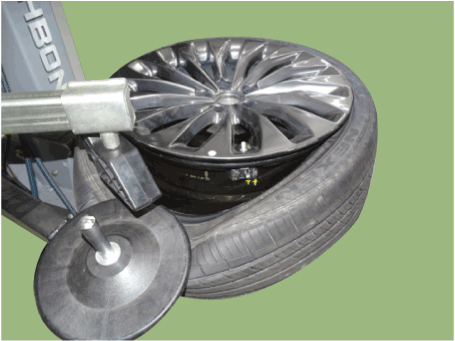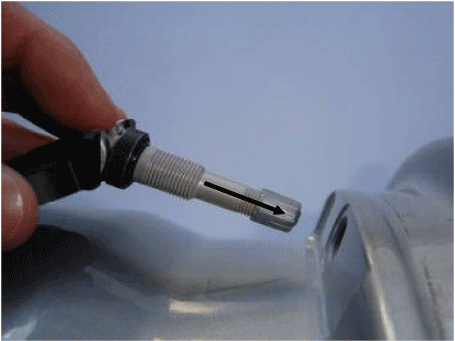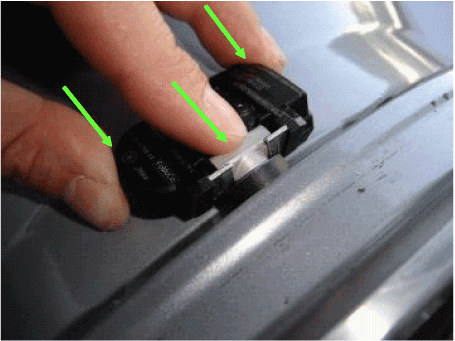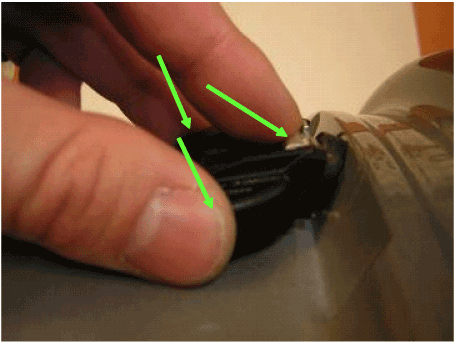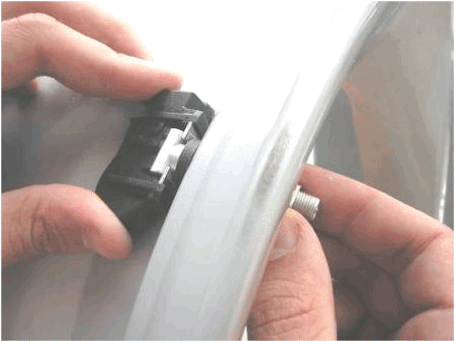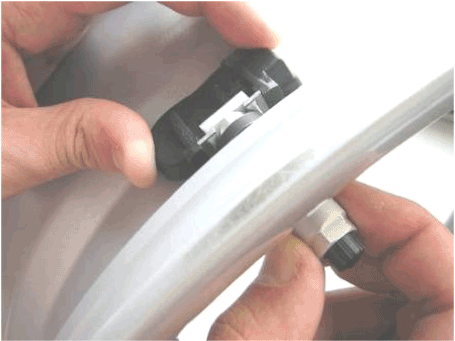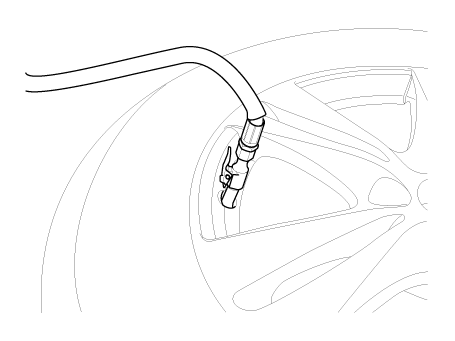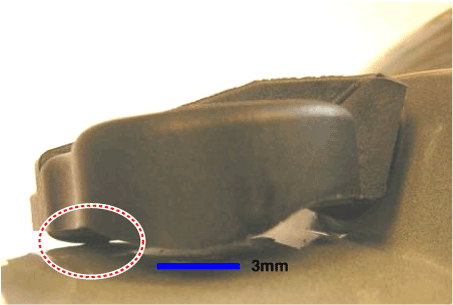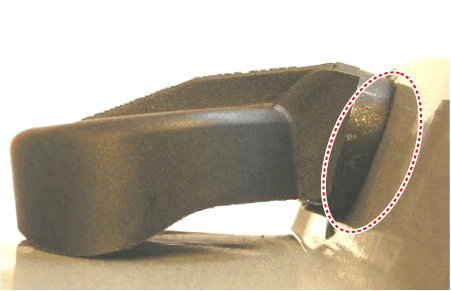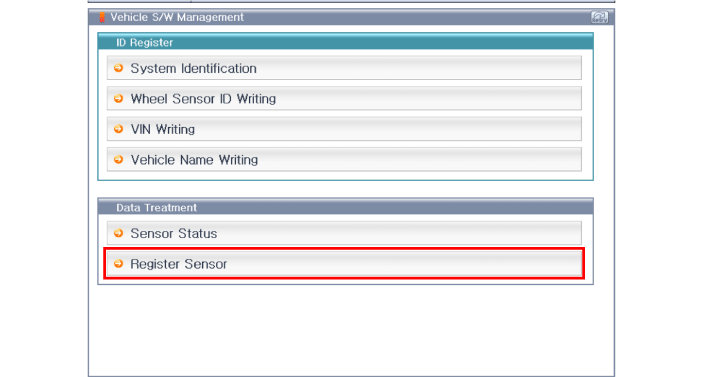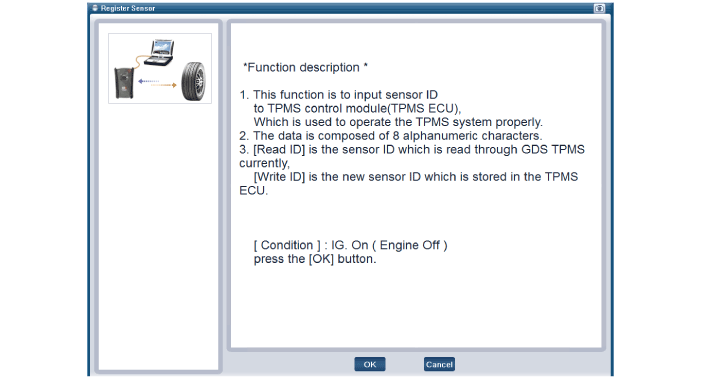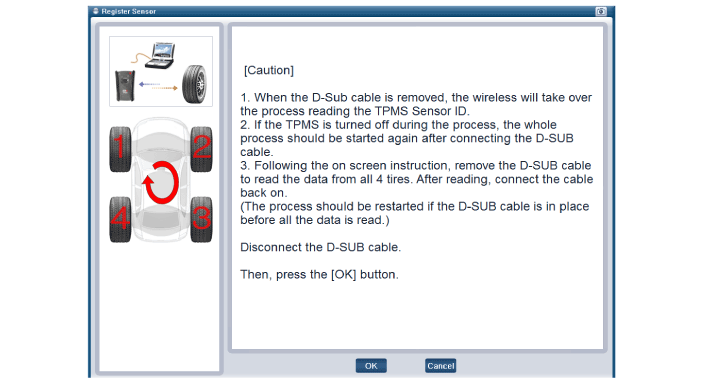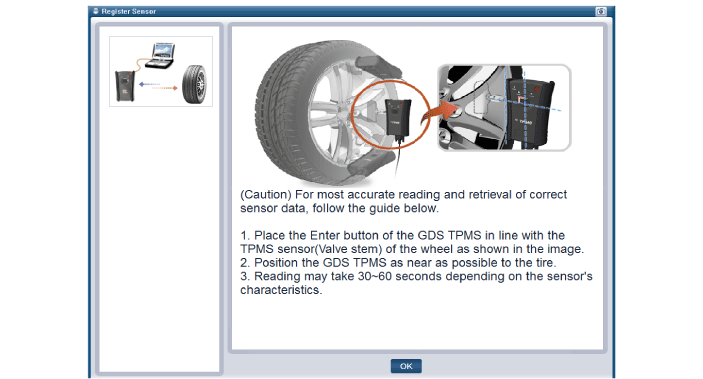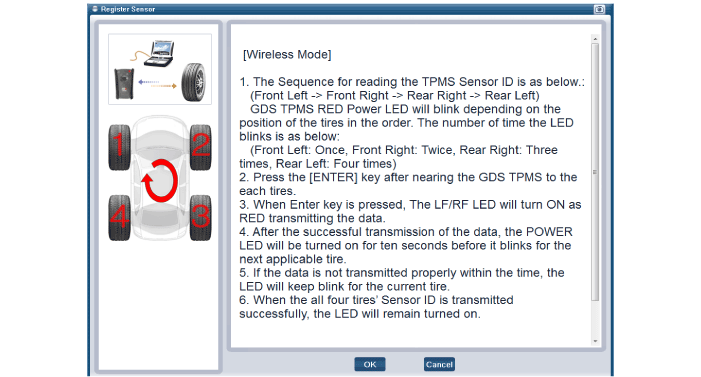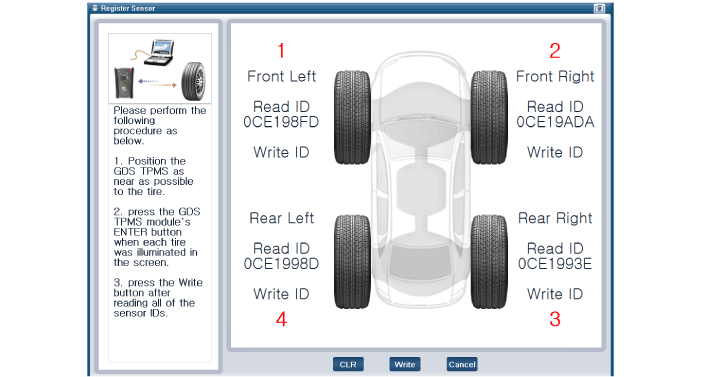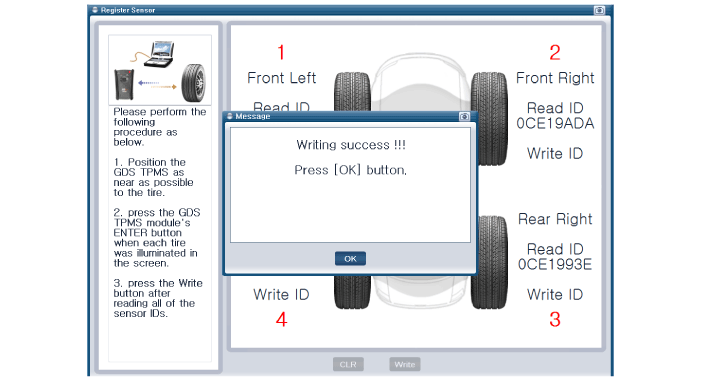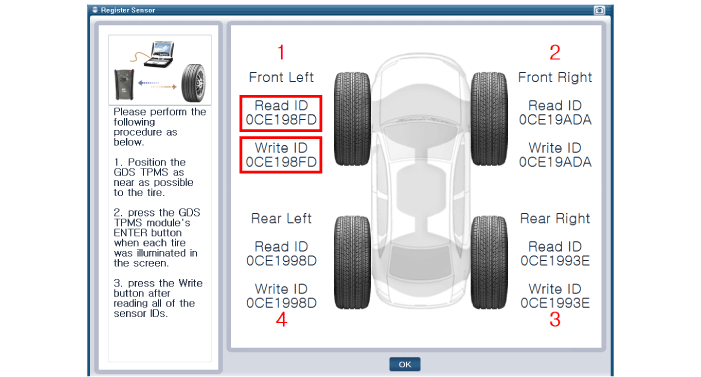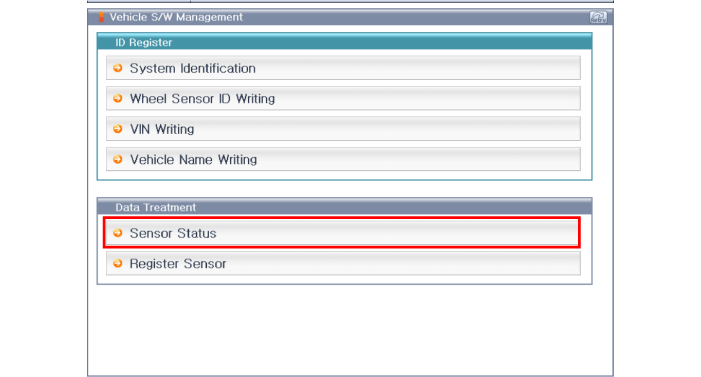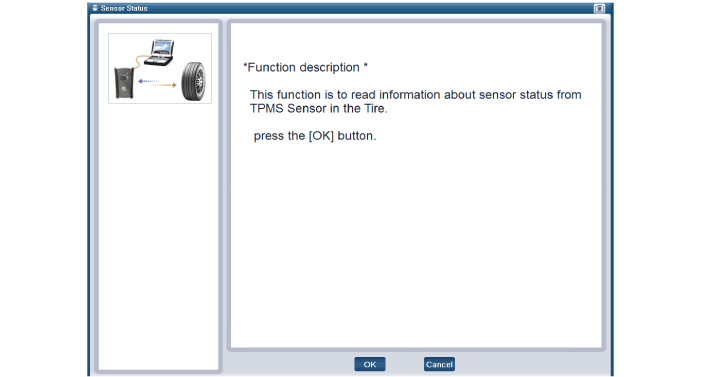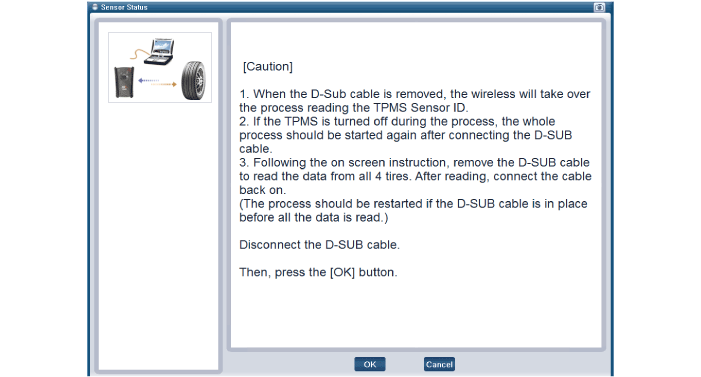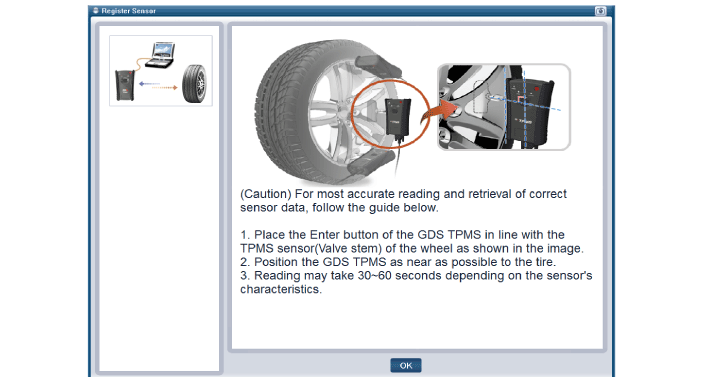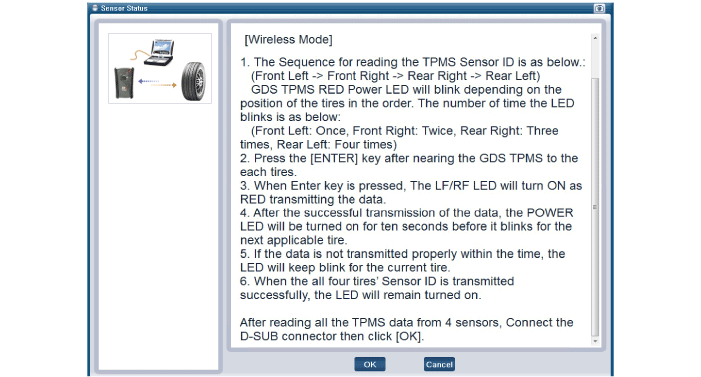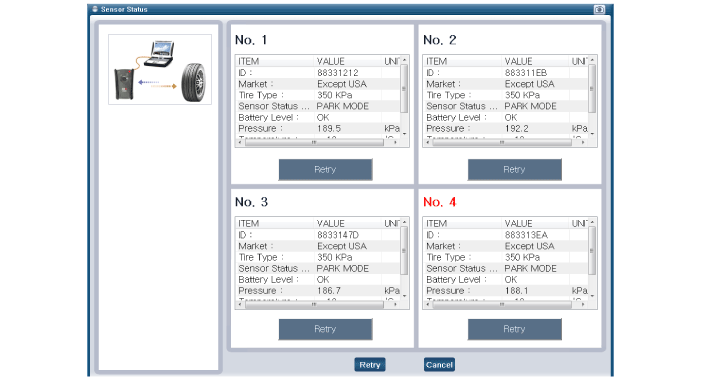Hyundai Ioniq: Tire Pressure Monitoring System / TPMS Sensor. Repair procedures
Hyundai Ioniq (AE) 2017-2025 Service Manual / Suspension System / Tire Pressure Monitoring System / TPMS Sensor. Repair procedures
| Replacement |
| 1. | Remove the valve core and deflate the tire. |
| 2. | Push the tire as illustration below by using tive change machine.
|
| 3. | Loosen the nut and then remove the TPMS sensor. |
| 4. | The valve during transportation (air inlet portion of the silver) deviated from its original location be sure to check whether the original position of the valve (metal brackets) are assembled in indented state. |
| 5. | While tightening the nut on the valve as not to deviate from the fixed position while rotating the valve to a fixed location (metal brackets to fit inside) and push. |
| 6. | Contact with the rim so that the valve washer seals the valve hole put into.
|
| 7. | Housing with two fingers holding the valve in the axial direction with one finger and push the valve.
|
| 8. | Housing, the state must be visible laser marking.
|
| 9. | When the valve is fully inserted so that the contact between the sensor and the rim while keeping hands on the wheel nut tightening will start Wed.
|
| 10. | While maintaining the position of the valve and the sensor is mounted nut.
|
| 11. | Remove the tire change machine. |
| 12. | Inject air into the tire until the beads are in the correct position.
|
| 13. | In the case of TPMS sensor failure, TPMS sensor needs learning. Faulty sensor is replaced new units, conduct learning of TPMS sensors. |
| Inspection |
After installing TPMS sensor test methods Thai
| 1. | Sealing washer on the outside rim of hole to be compressed. |
| 2. | The lower part of the valve housing, a fixed place (no metal brackets) should be located. |
| 3. | Housing is at least one or more points on the surface of the rim should contact. |
| 4. | The rim of the housing mounting height shall not exceed the height of the chin. [Normally]
[Faulty]
|
Diagnosis procedure by using diagnostic device
As manual for diagnosis methods by using diagnosis device, the main contents are as follows:
| 1. | Connect self-diagnosis connector(16pins) located in the lower of driver side crash pad to self-diagnosis device, and then turn the self-diagnosis device after key is ON. |
| 2. | Select the "vehicle model" and "TPMS" on GDS vehicle selection screen, then select OK. |
| Diagnostic Procedure Using a Diagnostic Instrument |
The following section describes how to diagnose faults using a diagnostic instrument.
| 1. | Connect the diagnostic instrument to the self-diagnostic connector (16-pin) beneath the crash pad on the side of driver's seat, and then turn on the ignition to activate the diagnostic instrument. |
| 2. | In the GDS Vehicle Type Selection menu, select "Vehicle Type" and "TPMS" System, and then opt for "OK." [Initial Screen for Sensor ID Registration]
[Register Sensor function description]
[Preparation phase sensor measurements]
[Sensor register method 1]
[Sensor register method 2]
[Sensor register method 3]
[Sensor register method 4]
[Sensor register method 5]
[Sensor Status initialization]
[Sensor function description]
[Preparation phase sensor measurements]
[Sensor measurements 1]
[Sensor measurements 2]
[Sensor Status]
|
 TPMS Sensor. Description and operation
TPMS Sensor. Description and operation
Description 1.General descriptionWU is a sensor placed in the tire that reports pressure and temperature.The WU is mounted inside the wheels, fixed to the valve...
 TPMS Receiver. Description and operation
TPMS Receiver. Description and operation
Description TPMS Receiver : BCM(body control module) integrated management1.Mode(1)Virgin State–
The receiver as a sole part is shipped in this state...
Other information:
Hyundai Ioniq (AE) 2017-2025 Service Manual: Schematic diagrams
C..
Hyundai Ioniq (AE) 2017-2025 Service Manual: Sub Battery Pack Assembly (Sub-BPA). Repair procedures
Check the target charging voltage when replacing with a new module Fault Code1.Turn OFF the ignition switch.2.Connect the diagnostic tool device to the self-diagnosis connector (DLC).3.Turn ON the ignition switch.4.Check the "Fault Code" in the diagnostic tool fault diagnosis...
Categories
- Manuals Home
- 1st Generation Ioniq Owners Manual
- 1st Generation Ioniq Service Manual
- Auto Door Lock/Unlock Features
- If the 12 Volt Battery is Discharged (Hybrid Vehicle)
- Hybrid battery SOC (State of Charge) gauge
- New on site
- Most important about car
Hybrid Vehicle Engine Compartment
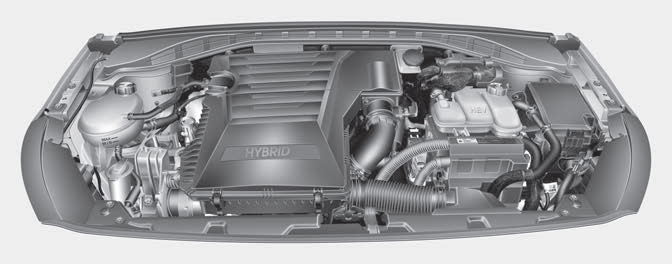
1. Engine oil filler cap
2. Engine oil dipstick
3. Engine coolant cap
4. Engine coolant reservoir
5. Inverter coolant reservoir
Copyright © 2025 www.hioniqae.com

